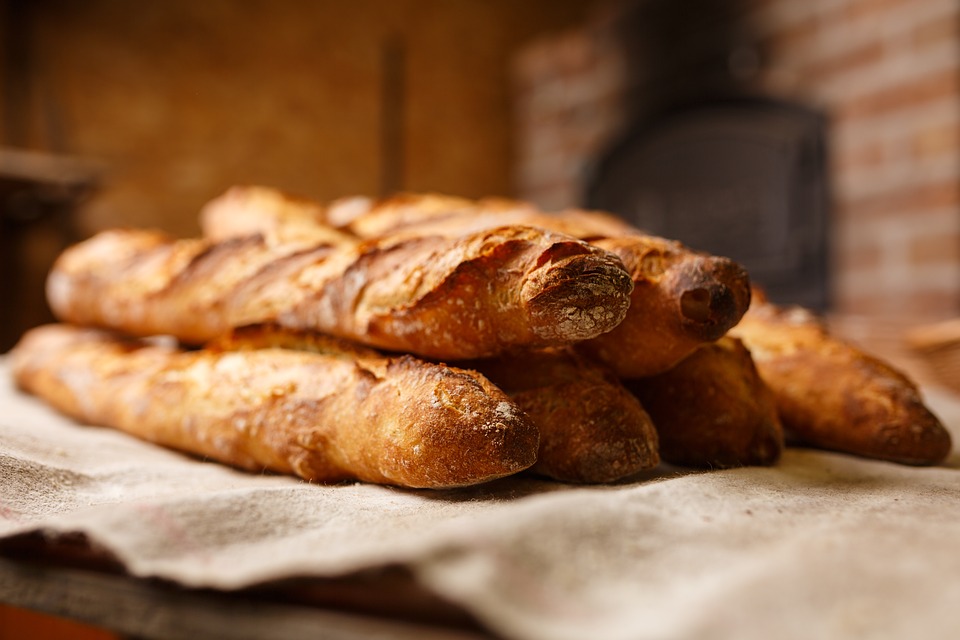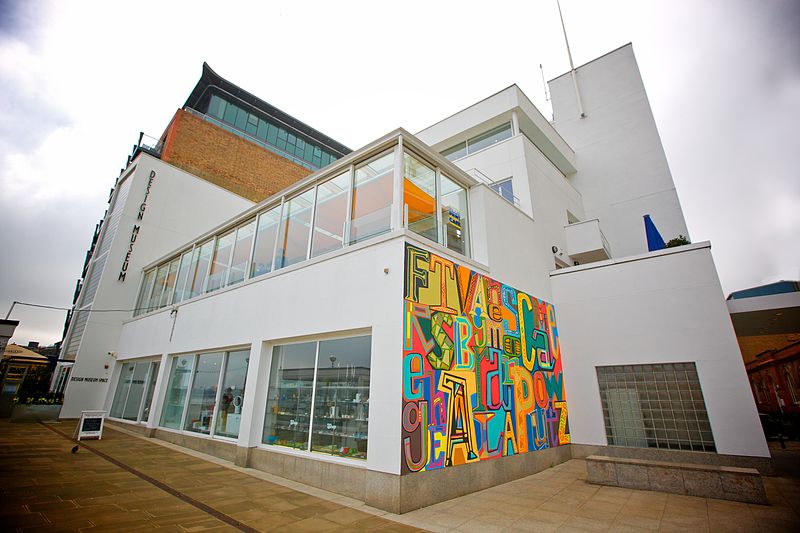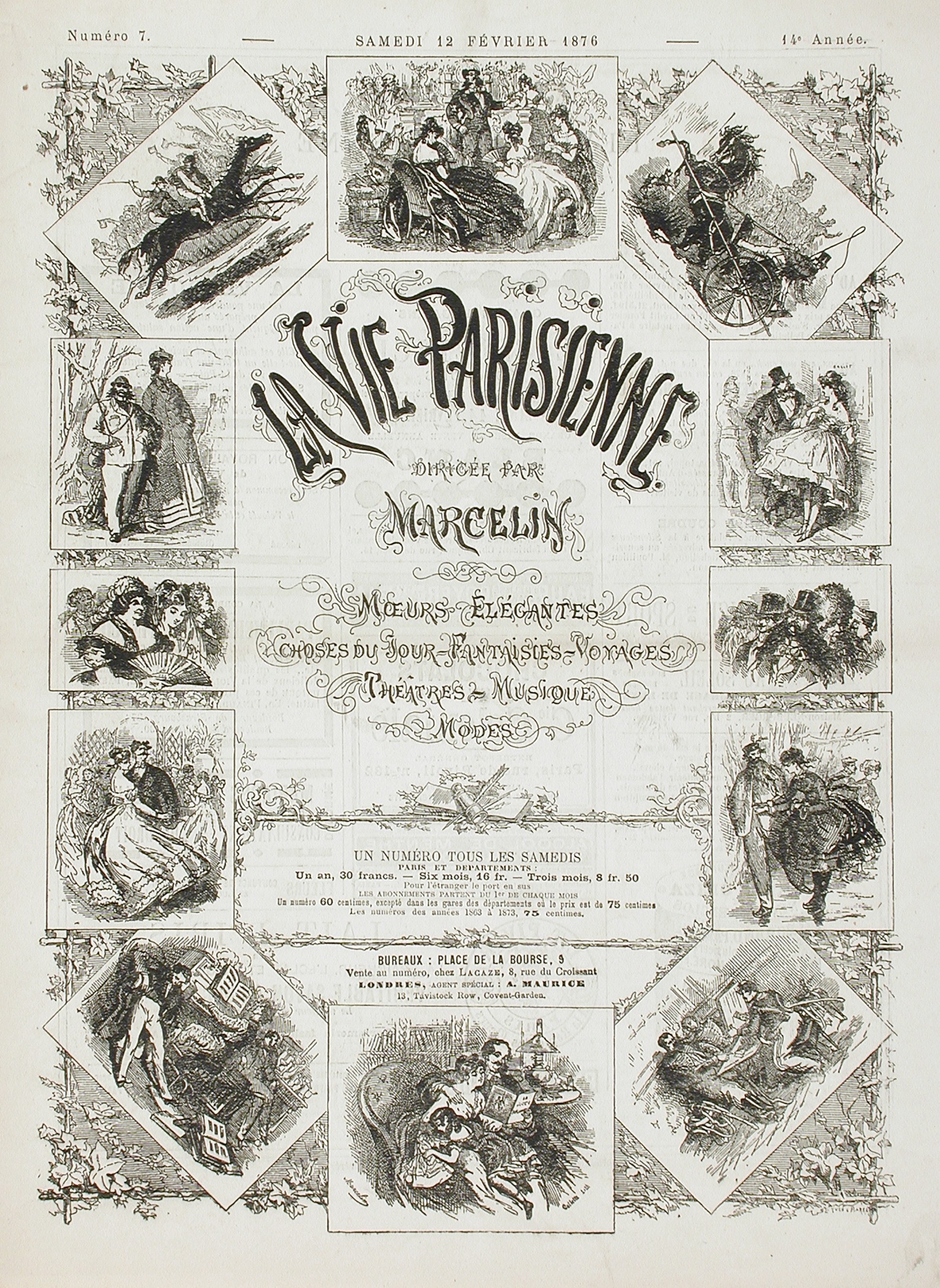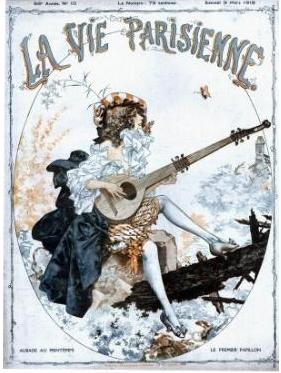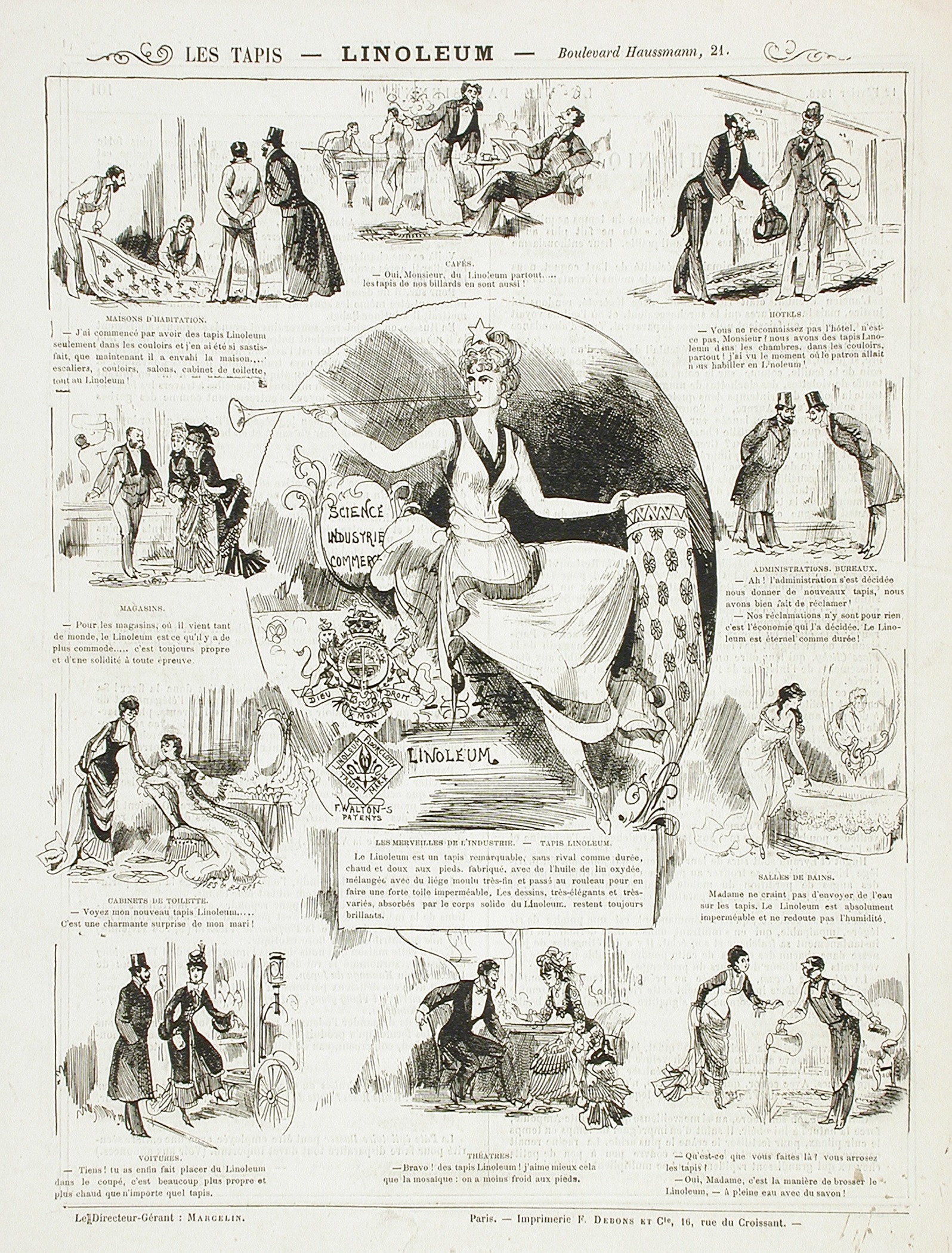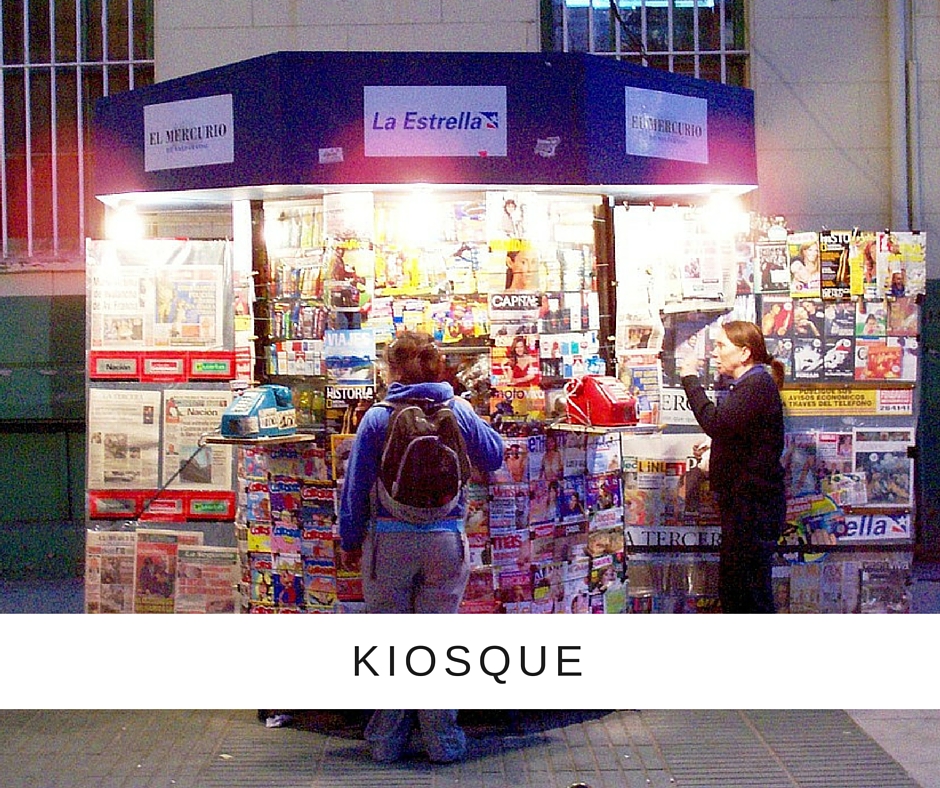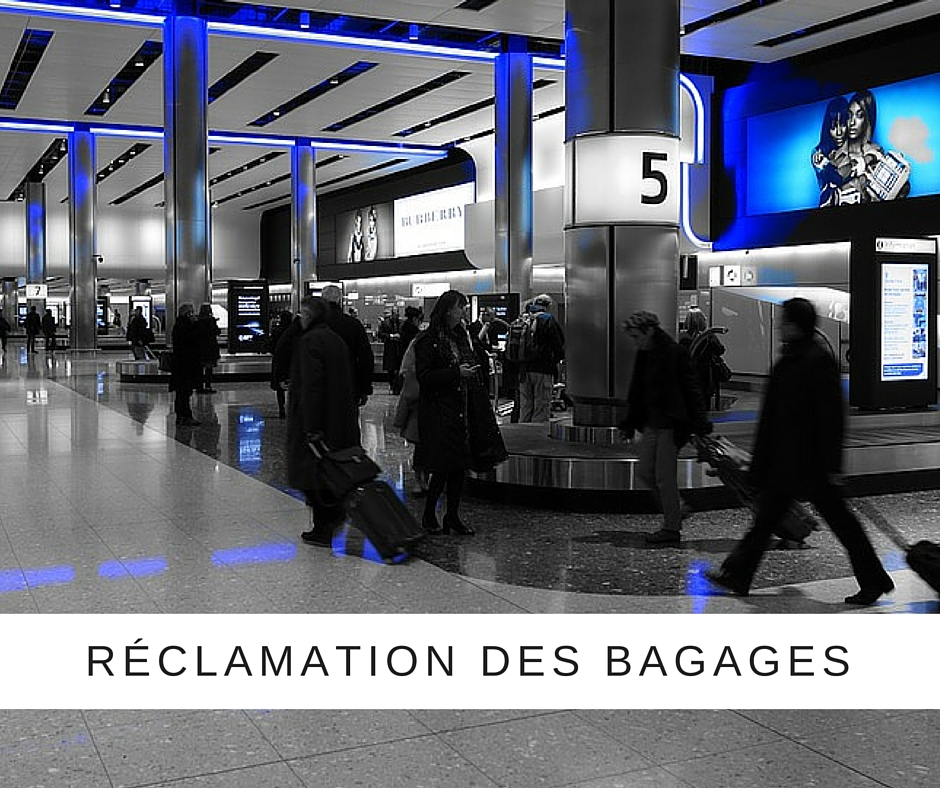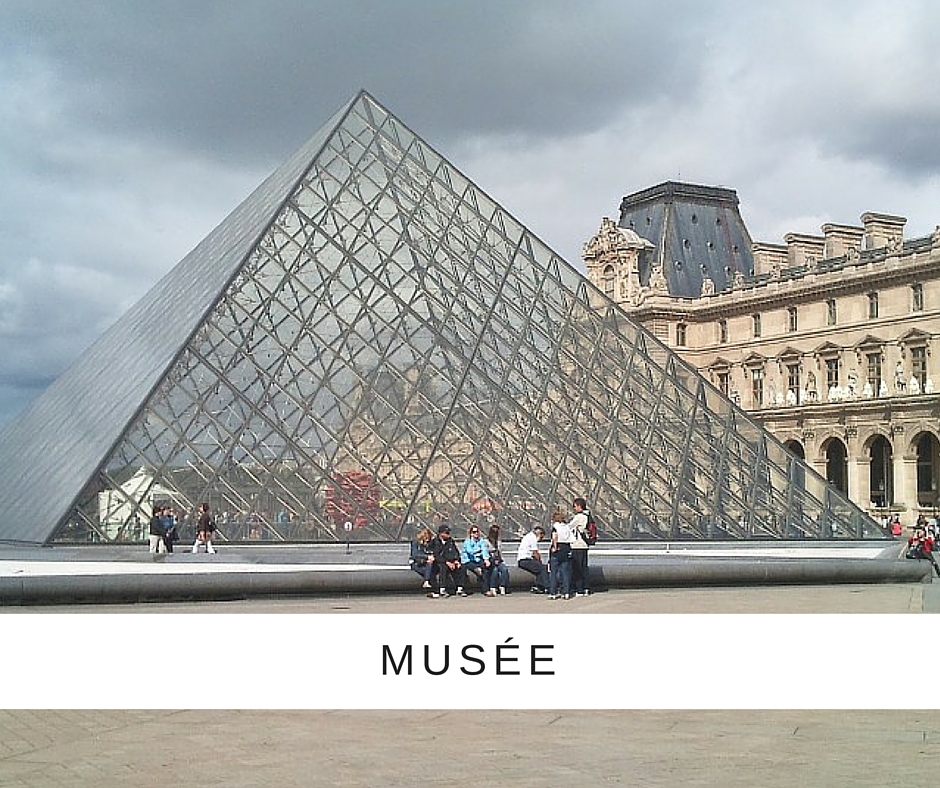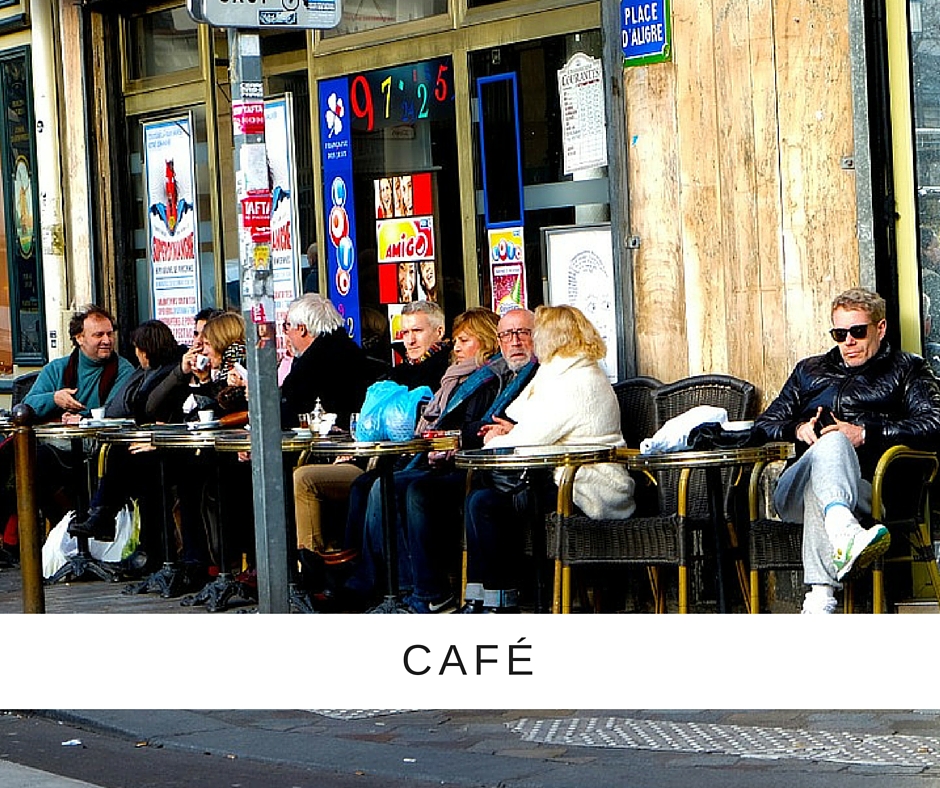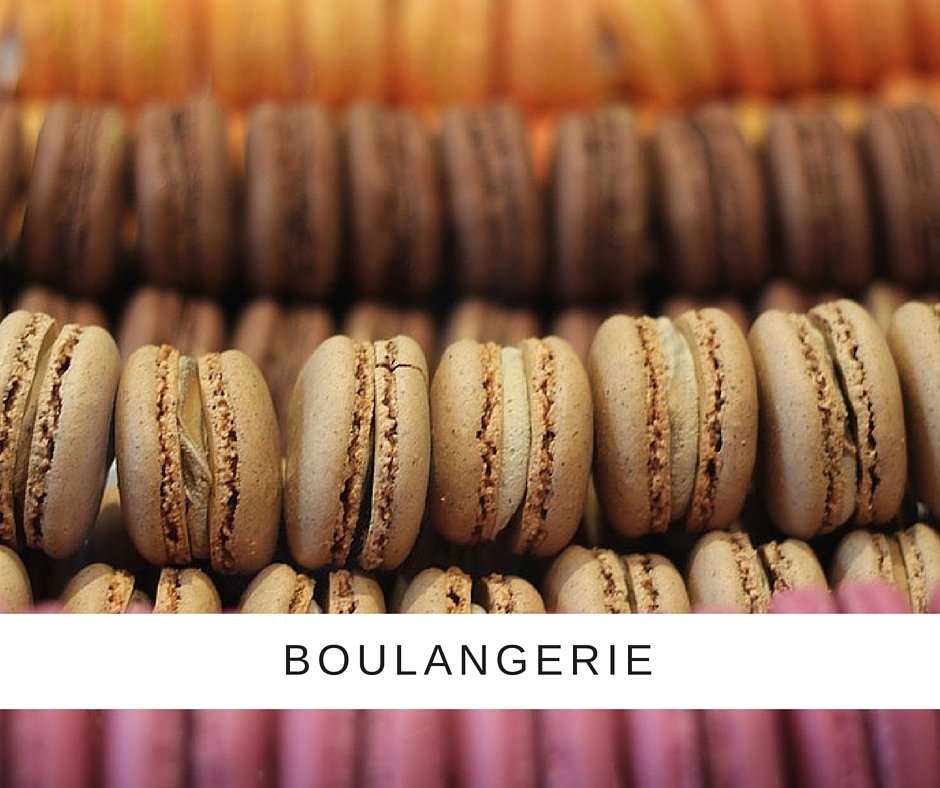
Burger vs. Baguette
The French have been cheating on their beloved baguette with a saucier culinary import - the hamburger.
It’s no secret that the french are famous for their baguette, especially if you follow our blog! One might even say they are sacred (especially if you ask France's President Emmanuel Macron who is lobbying to have the french delicacy listed as a Unesco cultural treasure). The French government actually regulated when bakers could take their vacations at one point so that its citizens wouldn’t ever be faced with a shortage of their favorite bread. However, a recent study shows that that the French are cheating on their beloved baguette with a much less authentic culinary import - the hamburger.
According to a recent BBC reported study, French citizens purchased approximately 1.5 billion burgers last year and only about 1.2 billion baguettes which equals to 14 times more burgers than a decade ago. The figures include the purchase of baguette sandwiches, known as jambon-beurre. The study also showed that nearly 85% of all restaurants in France now have at least one burger on their menus.
French purists have nothing to fear however as Gira Conseil, who provided the data for the study, says the report has been greatly exaggerated by stating “Let me explain: baguettes are taken away and eaten with fingers, burgers are mostly eaten sitting down with a knife and fork.” “It’s not comparing like with like.” Regardless of the French obsession with the burger, one aspect that will always make it uniquely French is that unlike their American counterparts, the French enjoy their burgers with a fork and knife—a concession even McDonald’s has made in the land of the baguette.
We hope you've enjoyed learning about the culinary French battle: Burger vs. Baguette! While may French are skeptical about the legitimacy of their reported burger obsession, we'd love to hear what you think about the Gira Conseil study. Comment below!
Forwarding Francophonie
In February, France hosted the international organization devoted to its favorite export: its language.
This past February, France hosted an international conference devoted to recognition of French culture and language around the world. The French president, Emmanuel Macron, made the revival of France's international influence one of his key priorities after rising to power in 2017. Also being employed to aid efforts is the Francophonie, an organization of former French colonies and other French-speaking populations.
The Francophonie is considerably younger than it’s older sibling, the British Commonwealth, and was established only in 1970, more than two decades after the British founded their organisation and is not nearly as political. While the British Queen remains the head of state of 16 out of the Commonwealth's 52 member-states and their summits deal with global governance issues, French presidents exercise no comparable functions in the Francophonie, and instead deal with nurturing cultural projects. This makes it easier for France to push for the inclusion of many countries which were never French colonies but where the French language plays an important role.
President Macron has stated that “The potential of the Francophonie is immense; with nearly 275 million French-speakers worldwide, France remains a juggernaut in the global linguistic landscape," in a speech last October.
He is also adamant about dispelling claims that this is merely an attempt to save a declining French language and culture when stating that "This is not at all a defensive policy I want to present here." However with most of its member states being at financial disadvantages, the Francophonie relies on France's resources for it’s sustainability much more than the Commonwealth relies on Britain.
Still, there are plenty of actions being taken including booming online French language courses in places where French culture was not previously dominant such as the Gulf. If one thing is for certain, it is that the promotion of the French language is dear to the hearts of most of its citizens. Not convinced? Recently President Macron conducted interviews to media around the world in English. Let’s just say, it didn’t go over so well back home with some of his countrymen.
We hope you've enjoyed learning about all that President Macron is doing in the effort of Forwarding Francophonie. Are you yearning to learn the language that is revered by the citizens of France? Our native instructors and immersive group classes can put you on the path to fluency sooner than you may think!
Going for the Gelato Gold
Where’s the best Italian ice cream? France, apparently.
France has been crowned the champion of the 2018 Gelato World Cup for the 4th time in the Italian city of Rimini.
France beat 11 other countries for the title with Spain taking second and Australia taking third place. Unfortunately, representatives from the land of gelato, Italy, were unable to attend this year due to the Gelato World Cup rules that bar the title holders from participating in the following edition of the tournament, however that rule has been removed for 2020 thus allowing France and Italy to battle it out for the title for the first time.
Each team was tasked with daily gelato challenges, with trials including: ice sculpture, a decorated gelato pan, gelato cake, an entrée competition of three hot finger foods combined with gourmet gelato and gelato snacks.
All of the entries are available on the official Instagram of the Gelato World Cup by clicking below:
Held at the four-day SIGEP international trade show for all things sweet and savory (ice cream, pastry, bakery and coffee), Argentina, Brazil, South Korea, Morocco, Poland, Switzerland, Ukraine and the United States also tested their scooping skills. Italian culture minister Dario Franceschini participated in the event and announced that, following Neapolitan pizza being added to United Nations' cultural body Unesco's intangible heritage list (as mentioned in our previous article: Battle of the Baguette), that he would push for ice cream's inclusion.
We hope you have enjoyed Going for the Gelato Gold! Which is your favorite of the gelato creations revealed at the Gelato World Cup? Leave a comment below!
Mobile Phone Prohibition
Get caught using your phone in the driver's seat and pay up to $150.
A French court has ruled that it is now illegal for drivers to use mobile phones in their cars and that drivers can be punished for using a mobile device any time the vehicle isn't parked in a designated parking area, including a car park or private driveway with a fine of up to €135 (approx. $150 USD) along with 3 points on their driving license. The law does not apply to hands-free devices (but does restrict wireless headsets), and it makes exceptions for emergency calls, like being stranded on the side of the road.
The decision came after a driver appealed a fine he received in 2017 which punished him for using a phone while he was parked at a roundabout with his hazard lights on. However, there is one exception that allows drivers to still make calls if they break down at the side of the road.
The efforts are all of a program that the French government implemented in order to tackle the rising number of automobile related deaths. In 2015 some 300,000 drivers in France were fined after being caught using their phone and a recent survey revealed that 9 out of 10 drivers in France admitted using their phone while driving, thus contributing to the death toll in 2016 that reached 3,469 victims. A study conducted by Sécurité Routière, has concluded that about 10 percent of the country’s road accidents are caused at least in part by telephone use.
We hope you've enjoyed learning about France's Mobile Phone Prohibition! Want to ensure you're up to date with French culture? Our Private Lessons and Group Classes at JP Linguistics are sure to set you on the road to linguistic fluency and cultural familiarity faster than you may think!
Au Revoir Smartphones!
Say hello to “multi-function mobiles!”
The French people as a whole are very proud and protective of their culture and customs (as referenced in our previous article, Battle of the Baguette), and there is no exception when it comes to the language itself. In an effort to avoid the “Englishification” of their language, officials in France have been coming up with alternatives to many of the most popular phrases of our current digital age.
In the past, the official journal of the French Republic, the Journal Officiel, has suggested “internet clandestin” instead of the term dark web. The very popular word, hashtag is called “mot-dièse” or “hash-word.” The latest word to get the official "Au revoir" in France is the term, smartphone thus giving way to “le mobile multifonction.”
This proposal is headed by the Commission d’enrichissement de la langue française & Academie Française to preserve the French language, and it isn’t the first time that they’ve encouraged French citizens to switch over to Franco-friendly words for tech products. Instead of smart TV, for instance, the commission suggested that French speakers say “Televiseur connecté.” A relatively straightforward translation was offered for net neutrality: “neutralité de l’internet.” Previous suggestions for smartphone have included “ordiphone” from “ordinateur,” the French word for "computer" and “terminal de poche” or "pocket terminal".
Today’s protectors of the language may be mostly concerned with emerging tech terms, but the battle against English influence has been waged for decades as France’s first committee to protect the country’s vocabulary was established in 1966: The General Delegation for the French language and the languages of France ("Délégation générale à la langue française et aux langues de France.”
What do you think about the Commission d’enrichissement de la langue française & Academie Française's attempt to say "Au Revoir Smartphones?" Leave a comment below!
Battle of the Baguette
"Excellence and expertise must be preserved, and that is why it should be heritage-listed," President Macron stated in an interview with French radio as French artisans have voiced concern about mass-produced, low quality imitations of the beloved French bread. "A baguette is the symbol of France, like the Eiffel Tower,"
Battle of the Baguette
The French president Emmanuel Macron has stated recently that the baguette should be listed as a Unesco cultural treasure. In a statement in support of a national bakers’ association, he affirmed that:
"The baguette is the envy of the whole world.”
"Excellence and expertise must be preserved, and that is why it should be heritage-listed,"
Inspired by the success of Italy's Naples pizza, which was protected by the UN's cultural body last year after an intense lobbying campaign (including a petition signed by more than two million Italians), Macron hopes to add baguettes to the coveted list that aims to save traditions from.
The bakers say it is not just the name and shape, but the recipe and ingredients that need to be protected.
"Excellence and expertise must be preserved, and that is why it should be heritage-listed," President Macron stated in an interview with French radio as French artisans have voiced concern about mass-produced, low quality imitations. "A baguette is the symbol of France, like the Eiffel Tower," said Dominique Anract, the president of the national confederation of baking and pastry.
"When I see the the growing dominance of French supermarkets and convenience stores in the sale of bread, I say to myself that we must act.”
The traditional baguette is already protected in France by a 1993 law that instructs that the bread must only be made from wheat flour, water, yeast and salt and can not be frozen or contain added preservatives.
We hope you've enjoyed learning about the Battle of the Baguette! Do you think the legendary bread has earned it's place among the list of Unesco cultural treasures? Leave a comment below and tell us why!
Say No to Crypto!
Bitcoins are not the new Euros.
The chief of the French central bank has today warned on the risks of investing in bitcoin. Governor Francois Villeroy de Galhau warned that "speculative" assets are not a currency and, confusingly, not "even a cryptocurrency." Its value and extreme volatility have no economic basis, and they are nobody's responsibility. In other words, say no to crypto.
The central bank, he said, warned that those buying bitcoin "do so entirely at their own risk.” His sentiments echo JPMorgan CEO, Jamie Dimon’s when he said he would fire any employee trading bitcoin for being “stupid” and that if he found out one of his employees were buying Bitcoin that: “I’d fire them in a second. For two reasons: It’s against our rules, and they’re stupid. And both are dangerous.”
As a bit of background, The Bank of France (Banque de France), headquartered in Paris, is the central bank of France and is linked to the European Central Bank (ECB). Founded in 1800, it helped resolve the financial crisis of 1848 and emerged as a powerful central bank. Its main charge is to implement the interest rate policy of the European System of Central Banks (ESCB). France's original currency, the Franc were convertible to Euros (which the country adopted on January 1st, 2002) until February 17, 2005 at the Banque de France.
This announcement comes amid a media-storm following the price of bitcoin, which climbed back over $12,000 in the second week of January, 2018. The astonishing price gains have prompted a number of notable figures in finance to declare bitcoin a bubble. However, while Bank of France shows no interest in cryptocurrencies, it has shown an interest in the blockchain technology that makes cryptocurrencies possible.
Do you agree with de Galhau's sentiments to "Say No To Crypto?" Comment below and let us know your thoughts!
Words of Wisdom by Bruyere
Here’s some Moralist motivation courtesy of Jean de la Bruyere.
Start the new year with
words of wisdom
courtesy of Jean De La Bruyere: French philosopher and moralist.
Bruyère was born in Paris in 1645 into a middle class family, his father as Controller General of Finance to the Hôtel de Ville. After his father's passing, he received a considerable inheritance. Very little is known of the events of his life as most people perceived him to be a silent, observant, but somewhat awkward man. However, his critical book, Caractères, written in 1688, garnered numerous enemies. Despite that, most notations about him are positive, specifically pertaining to his abilities in satire, humor, and "giving of advice" as seen below in some of his most noted quotes:
“Out of difficulties, grow miracles.”
"Politeness makes one appear outwardly as they should be within.”
"When a work lifts your spirits and inspires bold and noble thoughts in you, do not look for any other standard to judge by: the work is good, the product of a master craftsman.”
"Two quite opposite qualities equally bias our minds - habits and novelty."
"Those who make the worst use of their time are the first to complain of its shortness.”
"To be among people one loves, that's sufficient."
We hope that you've been inspired to continue on courtesy of the Words of Wisdom by Bruyere! If learning a new language is on your list of resolutions this year, our team of enthusiastic native instructors want to help you achieve your language goals and advance your fluency!
Azzedine Alaia: The Couturier
The late French-Tunisian “King of Cling" is being honored by London's Design Museum with a major exhibition.
French-Tunisian fashion designer, Azzedine Alaia has been honored by London's Design Museum with a major exhibition following his death on November 18th at the age of 77.
"Azzedine Alaia: The Couturier" will run from May 10th to October 7th, showcasing more than sixty pieces personally selected by Alaia himself. The museum stated that "Azzedine Alaia was recognized throughout his life as a master couturier who expressed the timeless beauty of the female form in the most refined degree of haute couture,” and will now present this unique exhibition planned originally by Alaia, exploring his passion and energy for fashion.
Alaia was born to a farming family in Tunisia in 1940 and studied sculpture at the fine arts school in Tunis before working at a neighborhood dressmaker's shop. He rose to fame in the 1980's when interior designer, Andree Putman, was walking down Madison Avenue with one of the first Alaïa leather coats and was stopped by a Bergdorf Goodman buyer who asked her what she was wearing. This interaction eventually led to his designs being sold in New York City and in Beverly Hills. By refusing to follow the path of traditional designers and neglecting traditional international fashion weeks, he instead began releasing his collections in his own time with very little concern for publicity.
As Catherine Lardeur stated in an interview to Crowd Magazine, Alaïa remains the king. He only holds fashion shows when he has something to show, on his own time frame. As a result, he became known as "The King of Cling" for his form-fitting gowns with some of his famous clients including Michelle Obama, Lady Gaga, Madonna, and Rihanna.
We hope you've enjoyed learning about "Azzedine Alaia: The Couturier!"
Planning to dive further into the world for French fashion and culture? Be sure to check out our highly rated, fully immersive group and private classes with our native instructors!
Chocolat Chaud
A super-simple recipe for the rich, warm treat.
In 1643, Princess Maria Theresa of Spain brought a gift of chocolate to France, a royal chocolate maker was employed, and chocolate has been a rage ever since, thus giving way to...
Chocolat Chaud.
This recipe requires no special regional ingredients, so it is extremely easy to make!
Prep: 2 mins, Cook: 5 mins
Yield: About 3 Cups (3 servings)
Ingredients:
6 ounces chocolate (semisweet, chopped or white)
1/4 cup hot water
3 tablespoons hot water
3 cups hot milk
Sugar to taste
Garnish: whipped cream, chocolate curls (optional)
Instructions:
Using a double boiler or a heat-safe glass bowl over simmering water, melt the chopped chocolate into ¼ cup of the water.
Stir in the 3 tablespoons hot water and milk until the chocolate mixture is smooth.
Pour the hot chocolate into cups and add sugar as desired.
Garnish each cup with a spoonful of whipped cream and a few chocolate curls and enjoy!
We hoped you enjoyed learning how to craft your own Chocolat Chaud! Nothing pairs with amazing French hot chocolate like the French language! Be sure to check out our Group Classes and Private Lessons below to learn more!
Home to the Letters of Love
France, the birthplace of the loterie d’amour, has a long history of celebrating La Saint-Valentin.
As the birthplace of the “language of love” and the loterie d’amour, or “drawing for love,” France has long celebrated Valentine’s Day - La Saint-Valentin - as the day for lovers.
It is claimed that the first Valentine’s Day card originated in France when Charles, Duke of Orleans, sent love letters to his wife while imprisoned in the Tower of London in 1415, and although card giving is not as popular as it once was, it has been replaced by another wonderful gift - treating one’s significant other to the wonders of the French cuisine.
One of the oldest Valentine's Day traditions in France placed men and women in houses that faced one another where they would take turns calling out to one another and pairing off. Men who weren’t satisfied with their match could simply leave a woman for another, and the women left unmatched gathered afterward for a bonfire. Eventually, the government passed down a decree officially banning the observation of this custom.
The French also came up with reasons to celebrate based purely on nature. One of the theories for why Valentine’s Day is observed specifically on February 14th is that birds and other animals paired off and mated in the middle of February and in France, there was a popular notion that birds start the process of mating around the middle of the second month of the year. Thus, the reason that lovers all over the region started exchanging romantic notes around this time (as they began to consider it opportune for them to do the same).
Today, the French celebrate Valentine’s Day like many others around the world by exchanging cards, small gifts, words of affection, and especially fresh flowers to show their love for one another. Oh, and wonderful French food. Lots of wonderful French food.
Imagining a romantic La Saint-Valentin? While we can't transport you to France, Home to the Letters of Love, we'd love to celebrate with you in NYC with a FREE event! Click below to gain access.
The Most Painted Woman in the World
She captured the minds and hearts of the greatest painters of her time, all while advertising her love of women.
If you had to guess what connected Pablo Picasso, Raoul Dufy, Tamara de Lempicka, Marie Laurencin, and Francis Picabia, other than their status as highly respected artists, would you know where to start?
If the name Suzy Solidor comes to mind...
you might be on the right track.
In addition to being featured in works by each of these greats, she is aptly dubbed:
The Most Painted Woman in the World.
Born Suzanne Louise Marie Marion in 1900 in the Pie district of Saint-Servan-sur-Mer in Brittany, France, Suzy made her name as a prominent singer and actress and opened / owned a popular chic nightclub called La Vie Parisienne. In her cabarets, The Most Painted Woman in the World would sing about not only her desire for women but what she would do to them in explicit detail. The idea that she was mainstream was a wonder in and of itself. As she became more and more famous for her brash antics (imagine an early 1900s Kardashian), fierce opposition to social norms, and openness about being a lesbian, she was able to easily set the terms of her sittings. She would be given each of the thirty-three portraits of herself to hang in her club - a la the most grand Instagram selfie feed to ever exist.
As a result of this persona, La Vie Parisienne became one of the trendiest night spots in Paris. Her fame allowed her to continue operation even throughout the Nazi occupation of France, as it was just as popular with the German soldiers as it had been for French citizens.
After her death in 1983, forty of her favorite paintings were hung in a museum in The Grimaldi Castle Museum in Haut de Cagnes where they are still on display ranging from her youth to her later years where she took on the monicker, The Admiral.
Want to stay ahead of the curve just as French superstar Suzy Solidor once did?
The Future is Foreign, and at JP Linguistics, we can put you on the road to French fluency sooner than you may have ever thought possible. Our immersive group classes and private lessons ensure that you are not only able to speak with ease, but are also exposed to the beautiful culture from which the language stems.
Going Up In Smoke
A move to curb the cinematic allure of a lit cigarette.
This past week, French senator, Nadine Grelet-Certenais, has struck a match in the French cinema world by proposing a ban on film stars smoking on screen. She states makes the habit coveted and provides free advertising to the tobacco industry. Now that Agnès Buzyn, the health minister, has echoed her sentiments, film-makers may have their hopes going up in smoke.
Unfortunately, this may be much more difficult than just banning them outright. Smoking a cigarette and French cinema have always gone together, and not just in the sense of being on the screen.
They are both very effective ways to kill time.
Think back to any famous French film without the hero positioned stoically surrounded by a delicate stream of twirling smoke...
What has kept this cinematic construct alive is not that it "looks cool" but, more importantly that it foreshadows the mortality of the French antihero. However, as a juxtaposition to their many on screen smoking characters, two of the most famous French film stars, Jean-Paul Belmondo & Alain Delon, are still alive into their 80s.
This has been mirrored in American film and television as well, specifically in period pieces such as Mad Men, Mindhunter, Narcos, etc. In order to accurately represent how these characters went through everyday life requires what was, at one time, an essential prop in the real world at that time.
While this topic remains debated feverently, we can only hope French film-makers and politicians can come to a compromise to not only preserve artistic integrity, but be weary of glorifying an unhealthy habit.
What do you think about the possibility of the French cinema going up in smoke? Leave a comment below!
French People and Their Obsession With Cheese
How can something that smells so bad taste so good?
There are more than a 1000 sorts of cheese in France alone and it represents centuries of pure French traditions! No wonder the French use the expression "en faire tout un fromage" (to make a cheese out of it) to refer to someone who blows things out of proportion! In this post, we are presenting you with 5 of our favorite French cheeses. Learn how they came to existence and how you can cut and eat them. Enjoy this post and remember to "let them eat cheese!"
1. Le Fromage de Roquefort
Credit: Cyn Furey
Ah, le Roquefort! Easily recognizable by its blue-greenish dots in a white body, this cheese is part of the blue cheese family. Roquefort is a town located in the Landes, in the southwest of France. It dates back to the 12th Century when people already used the Caves of Roquefort to salt and affine their cheeses. The legend says that a shepherd left his cheese sandwich in a cave in Roquefort to court a young and beautiful woman. After chasing her with no results, he came back and found his sandwich with blue dots in it. Roquefort was born. Wether you believe in the legend or not, Roquefort cheese is now an AOC & AOP cheese, meaning that if the cheese is not made in the caves of Roquefort, then you cannot call it Roquefort. It is the champagne of the cheeses!
How to eat it?
You can eat Roquefort cold in a gaspacho or on a tartine with a touch of butter. Or, you can eat it warm as a mushroom stuffing.
How to cut it ?
Roquefort is part of the blue cheeses and need to be cut in quarters.
2. Le comté
Comté cheese dates back to the 13th Century. It is derived from the Gruyère cheese that was introduced at the end of the 13th Century. Comté is a cheese made from cow milk and is from the region of Franche-Comté. During the Middle-Ages, winters were long and hard. People had to think collectively how to get through the rough winters. It forced farmers to work together to better use the provisions that they could get over the summer. Indeed, cows were producing a lot of milk over the summer and then less during the winter. People would therefore make huge wheels of cheese that would require over a 130 gallons of milk (500L) to produce. Farmers had to work collectively to bring together those huge amounts of milk so they organized as "cooperatives". Comté is a symbole of farmers working together so they could survive the winter.
How to eat it?
Comté can be enjoyed cold with a piece of bread or warm in any dish you like. It is preferred with chicken and beef or even with cod fish.
How to cut it?
Because Comté comes out of a huge wheel, the slices of comté you will get will be long. You must cut the heart of the wheel in long slices and then you have to cut the rest from the center to the crust.
3. Le mont D'or
Photo Credit: Arnaud 25
Mont D'or is probable everything you can imagine about cheese. Warm, melty, lovely cheese that you add to a meal to make it as decadent as possible! The most ancient form of this cheese dates back to 1280. Unlike Comté, it does not require a lot of milk to make because it is mostly made during the winter. Mont D'or only needs less than 2 gallons of milk to be produced. This is why it is a soft, rich and seasonal cheese from Franche-Comté as well! Because of its consistency, the cheese is encircled with a "belt" made out of a specific wood, usually spruce.
How to eat it?
Mont D'or can be easily spread on bread or you can take it up a notch and the cheese becomes your own portable fondue! Just warm up the cheese case (made our of spruce, of course) and then remove the top crust and dip! It becomes a "boîte chaude"
How to cut it?
Because of its consistency, it is hard to "cut" this cheese. It is recommended to remove the top crust and serve it with a spoon.
4. Camembert
Photo Credit: NJGJ
Camembert is probably the most popular cheese in modern France. It was created in the 18th Century in the Town of Camembert in the northeast of France. According to Pierre Androuët, this mix between curd cheese and brie became popular after Parisian tourists brought it back to Paris for people to enjoy in the 18th Century. Camembert was so good that it became part of the food rations for soldiers during the First World War, helping growing its popularity. Not only is the cheese popular but the box in which it is kept also is! People who collect Camembert's boxes are called Tyrosémiophiles. Along with la baguette, Camembert is a symbole of France.
How to eat it?
Simply on a baguette et voilà!
How to cut it?
Just like a cake, in equal parts from the center to the ridge.
5. Beaufort
Photo Credit: Coyau
Le Beaufort is a very old cheese that is produced in the region of Savoie, in Beaufort to be exact. History shows that this cheese was made before the Middle-Ages and continue to be produced today. It is only in 1965 that the cheese produced in the Beaufort region is called Beaufort. This cheese is firm, yellow, and concave. It is an essential ingredient for a Fondue Savoyarde! Cheese fondue is something that everyone loves! Picture a winter night, cold weather outside and a warm pot of cheese in which you dip pieces of bread for you to enjoy... MiamMiam !
How to eat it?
In slices with crackers or in a warm fondue pot mixed with other cheeses such as Gruyère de Savoie, Emmental de Savoie, white wine and pepper!
How to cut it?
Cut it in very thing quarters.
We hope you enjoyed this delicious array of cheeses in French People and Their Obsession With Cheese! We hope you spend a wonderful (French-inspired) fall with your guests. If you are looking to learn more French language and culture, don't forget to check out our French Private Lessons, French Group Classes, and our cultural events at JP Linguistics. Bonne Journée!
5 Reasons to Learn a Foreign Language
When attention spans have been reduced to 6 seconds, it's important to find ways to get your brain back on track.
5 Reasons to Learn a Foreign Language
You have probably heard that learning a foreign language is good for you. It is great for your brain, for your job and for your personal well-being, period. There are plenty of great reasons why people choose to learn foreign languages and this post provides a deeper response into what motivates and fuels people to start. We hope you enjoy this unique post and don't forget to share your thoughts in the comments section below!
1. "I Want to Make Better Financial Decisions"
Learning a foreign language allows you to get a broader understanding of a problem and therefore have a more comprehensive vision of how to solve that problem. A study by psychologists at the University of Chicago have found that people who speak a foreign language (especially those fluent in it) eliminate the tendency to get caught up in the 'here and now.' Thus, the study shows that monolingual people (people who only speak one language) are more likely to refrain from investments or financial decisions which they would benefit from down the road. This means that learning foreign languages helps you sift through the 'noise' and make smarter, more long-term financial decisions.
2. "I want to understand my partner"
Many students come to our classrooms with the goal of understanding their (foreign) spouse or partner. It is a goal we hear often and, in our opinions, one of the most rewarding goals when you start actually seeing the results from learning a foreign language. People from different linguistic backgrounds think differently. For example, American English is very inclined to be extremely positive with phrases such as "it is beautiful out!" or "you did such a great job today!" Whereas French, for example, uses negative sentence structures to express a positive thing like "il fait pas chaud dehors" (it is not hot outside = it is cold), or the very common "pas mal" (not bad = good). These examples show how two cultures might express the exact same sentiment, but in two opposite ways. In this case, love is the motivation for many who continue to learn a foreign language and who want to better understand their (foreign) partners. This passion for a foreign concepts is like a "sublime hunger" (as described by Emmanuel Levinas) and it must be fed!
3. "i want Improve MY memory and attention Span!"
In a society where the attention span has been reduced to 6 seconds (yes, 6 seconds) it is important to find ways to get back on track and improve your brain's activity. Surprise! Learning a foreign language will help you accomplish just that. A study conducted by Northwestern University showed that knowing multiple languages forces your brain to pay attention to relevant sounds, while blocking out irrelevant sounds. This makes a lot of sense since you need to adjust the frequency of your hearing in order to "receive" and "decrypt" the message. The study provided the first biological evidence that being bilingual improves your hearing and helps with attention span and working memory. Many adults find it hard to learn a foreign language and believe in the myth that it is too late for them because of age. This is NOT true. You can learn and become highly proficient in a foreign language. There are certain obstacles for adults that do not necessarily exist in children, but they are mainly phonetic. You can do it and your brain will thank you!
4. "I want to Increase my sense of self worth"
There is nothing wrong with being proud of mastering something in a foreign language. Being able to order a full meal while being understood in a foreign country feels great! Let's be honest, we love the feeling of pride and joy that comes with asking a taxi driver to go to our hotel (in a foreign language) and we actually get there! Communication is key and it feels amazing when it works. On a different level, speaking a foreign language contributes to the development of your own personality. It can help you discover a part of yourself you did not know. It can help create a part of yourself that you really want to have. Think of languages as a blank state. You are in charge of building the personality you want. So think of it that way. What persona will you create?
5. "I want To Increase MY NetworkING Skills"
Speaking another language opens up a whole new world of communication and networking possibilities for you! In a world that is becoming more and more connected between Twitter, Instagram, Facebook, Snapchat and more, it is extremely beneficial to be able to communicate with as many of its members as possible. The technology to do so is no longer a barrier, and once you break down the language barrier, your network can grow tremendously. You can use your foreign language skills to your advantage by quickly jumping to the tweet that others might not be able to respond to. Nowadays, it's about having the skills and the speed.
We hope you enjoyed these 5 Reasons to Learn a Foreign Language. If you are looking to build your foreign language skills, don't forget to check out our Group Classes, and Cultural Events at JP Linguistics. Also, don't forget to share this post with your friends using the simple 'share' button below. Merci beaucoup! Grazie mille! Muchas gracias!
Mirabelle Season in France
The history of a beautiful and delicious little plum!
Today's post takes us to the Lorraine Région where one famous fruit, La Mirabelle, announces the transition of seasons from summer to fall. Walking through most markets, French people cannot escape the wonderful "étales" of this yellow, orange, and red plum. Join us through this post which shares the history of the Mirabelle and a few recipes for how to prepare it. Enjoy!
La Mirabelle is a yellow looking plum, quite similar to a cherry in shape but completely different in taste. It was first introduced in France five centuries ago by the Duc D'Anjou & De Lorraine in the XV Century. Mirabelle plums were apparently imported from China and then cultivated in the Lorraine Region, more specifically in the area of Metz. Indeed, the soil and the climate was so good for the development of the Mirabelle trees that the Académie Française officially recognized the fruit as La Mirabelle de Lorraine in 1762 (our French students know that when things are allowed by the Académie Française, it is serious!) Today, Lorraine accounts for 70% of the total worldwide production.
Its nickname is La Petite Reine de Lorraine or "The Small Queen of Lorraine" which is interesting because the word "mirabelle" comes from the Latin word mirabilis which means "beautiful to look at."
Shaped and colored like the sun, the yellow, orange, and red colors of the mirabelle might remind you of warm summer days spent with friends and family.
Tarte Lorraine aux Mirabelles
If you want to try one of the most traditional Lorraine deserts for August, try to make your own tarte following the recipe below (from Meilleur du Chef). It is absolutely delicious and we cannot wait for you to try it!
Image Credit: Chef Philippe of www.meilleurduchef.com
Ingredients:
250g sweet shortcrust pastry ('pâte sucrée')
500g fresh Mirabelle plums (or tinned in syrup)
25g flour
50g crème fraîche
50g sugar
1 egg
Vanilla extract
Steps:
1. Before starting this Mirabelle Plum Tart recipe, make sure you have organized all the necessary ingredients.
2. Make the sweet shortcrust pastry. Refrigerate for a few hours before use.
3. In a flat-bottomed pastry bowl, crack the whole eggs and pour the castor sugar in a thin stream.
To continue reading the step by step process with images click here.
Liqueur de Mirabelles
For all you bartenders out there, let's learn how to make your own Liqueur. This exciting recipe can be used in Kirs or when you have a digestive issue (according to French folklore, L'eau de Vie de Mirabelles can clear your digestive system). This drink is great to use when mixed with a white wine to make a Kir Lorrain. Start brewing yours following the recipe we found from Super Toinette and it is amazing!
Image Credit: www.enpassantparlalorraine.fr
Ingredients:
1 kg of mirabelles
250 Caster sugar
1 L of 45° alcohol for fruits
Steps:
1. Wash, drain , cut in half, leaving the core. Pour into a preserving pan
2. Take the caster sugar and alcohol ...Pour sugar and alcohol on plums and mix well.
Let soak in the tub for 4 days. Cover with a clean tea towel.
3. After four days ...the sugar has melted, stir. Transfer to jars, cap and leave to infuse for at least month.
4. After a month ...Filter with a strainer or a large colander. You can also filter through a clean cloth over a large bowl. Pour into bottles, seal well and store in a cool place. Wait two months before consuming.
We hope you enjoyed this delicious array of recipes in Mirabelle Season in France! We hope you have a wonderful (French-inspired) summer with your guests. If you are looking to learn more French language and culture, don't forget to check out our French Private Lessons, French Group Classes, and our cultural events at JP Linguistics. Bonne Journée!
Fall Vocabulary for French Beginners
The only word not in this quiz is “pumpkin spice latte.”
In the fall, the smell of autumn dances across the cobblestone streets of Paris as the warm-colored leaves drift over vineyards in the South of France. For tourists, this time of year is one of the 'hidden gems' to be discovered for an authentic traveling experience as busy Parisians head back to work, farmers are back to tending their farms and kids are back to school ('La Rentrée'). So why not take advantage of this glorious time of France's landscape by brushing up on your French vocab? Below we have included a few fall-inspired photos and a very short quiz to help build your Fall Vocabulary for French Beginners! Let's see how many terms you can translate from English to French (*take note of plural words or verbs). Click 'Traduire' to see the correct translations. We hope you enjoy!
Take the quiz!
Match the English terms above to the French translations below. Try your best at guessing the terms by breaking the word into syllables and recognizing similarities in the terms to the English language. Click 'Traduire' to see the correct responses.
8 French Phrases That Do Not Translate in English
These French words and phrases might not work well with flashcards, but learning them is so worth it.
Learning French is always filled with surprises, especially when some words and phrases do not exist in English. For us, this is one of the most exciting things about learning a foreign language - discovering completely new things we never knew existed. On that note, we wanted to provide a few French phrases and words you may have never heard before but might find inspiring. As you read, imagine incorporating one of these in your next conversations en français. Also, if you know a few that aren't listed, feel free to add it to the comment's section below. Bonne lecture!
"La douleur exquise"
Oh, the romance of the French language! This phrase is both eloquent and rather depressing as it roughly translates to "the exquisite pain." For French people this phrase would be used in reference to the longing for a love that cannot be achieved. Very similar to a Romeo and Juliet scenario. Next time you find your heart aching for something it cannot have, remember this phrase to sum up your expression.
Téléspectateur
It's almost shocking that a word like this does not exist in English as Americans are one of the largest consumers of media on the planet. However, the French came up with a term which describes viewers who are either audience members of a live TV broadcast or are simply watching/listening to TV from their home as a téléspectateur.
"Flâner"
If you've ever been to Europe, you know that long leisurely strolls through city plazas is a common activity for the locals. In French, you may think to describe this with the term 'une promenade' (which means a stroll in English). However, in the 19th century, a new word was created which defined a stroll, more specifically a stroll through Paris, without any particular destination or goal in mind as Flâner. Thus, aimless Parisian pedestrians strolling the city only to enjoy the view became known as Flâneurs.
"Bricolage"
If you are a crafty person, then this French word is for you. It translates to something very similar to do-it-yourself or DIY. Additionally, a bricoleur describes someone like a handyman.
"Ras-le-bol"
This one is perhaps the oddest French phrases of them all which describes an extreme sense of dissatisfaction and frustration. It would be something similar to the English "I've had enough," "I'm through," or "I've had it up to here with..." This is typically the last thing you might hear out of someone's mouth before storming out of a room after a heated discussion.
"Bouffer"
This term is a way to describe how animals eat. It can also be used to impolitely refer to humans, kind of like the saying that someone 'eats like a pig.'
"Retrouvailles"
This rather charming French word describes the ultimate sense of joy experienced when meeting someone you may not have seen for a very long time. If you could see it, it would look like someone jumping up and down and screaming with happiness.
"LoufoQuerie"
In short, this term means craziness. The word and how it came to be is crazy within itself. It's root, louchébem, is a slang term invented by French butchers in the 19th Century who made a sort-of-game out of the French language. For each word, they would move the first consonant to the end, add a standard suffix, then place the letter 'L' at the very beginning. This is something like 'pig latin' or 'gibberish.' To this day, this slang language is still used in France by butchers across the country. The root of this term is indeed just as crazy as its meaning.
Learning French is always surprising and these 8 French Phrases That Do Not Translate in English are just a few of the hidden secrets to becoming more fluent in French. Have other words or phrases you'd like added to this list? Don't forget to post them in the comment's section below & pass this forward to your francophone friends online using #jplingo @jplinguistics. Merci et à bientôt!
French Vocabulary to Use While Traveling
Some useful phrases to know for your next trip to a Francophone port of call.
It is no secret that we are huge fans of traveling! Yes, we are a little biased, but most of our students feel the same. Thus, we thought it would be helpful to put together some French vocabulary that comes in very handy while traveling. Check out all of the tools below (including audio pronunciations) and a quiz at the end. We hope you can utilize the helpful tips on your next trip abroad. Bonne Voyager!
Preparing For The Trip
Yes, traveling is inspiring. You might imagine sipping a warm coffee amidst the cobblestone streets of Paris and just the mere thought brings a smile to our faces. But, in order to make this journey a pleasant reality, the key is in the preparation. This means packing and planning accordingly, thinking ahead and strategizing. So, we shall focus on the verb Préparer or To Prepare. To keep things simple, I have included the conjugations for this verb in the present tense only. Take a look at the chart below and try saying the words aloud.
To make sure you are pronouncing the words correctly, I have included an audio guide below. This recording is from Jean-Philippe, one of our native French instructors at JP Linguistics. Take a listen and try to saying the conjugations aloud with Jean-Philippe.
Now that we are familiar with the conjugations of Préparer, let's try building a sentence. In order to do this, we need some more vocabulary which I have included in the images below. Take a peek at some of the terms such as Le Passport, Des Gants, and Un Pull and try saying the words aloud.
Now we can build a few sentences using the Je or 'I' form using the conjugations above. Instead of using the other forms (Tu, Il/Elle, etc), we'll just keep it simple with the Je form throughout this article. The format for building the sentence looks like this:
SUBJECT + VERB + (PREPOSITION) + NOUN
Here are a few sample sentences. Try reading these and saying them aloud. Below is an audio guide to help. It repeats each sentence twice.
1. Je prépare le sac (I prepare the bag)
2. Je prépare mon passport (I prepare my passport)
3. Je prépare mon appareil photo (I prepare my camera)
4. Je prépare mon portable pour le voyage (I prepare my cell phone for the trip)
5. Je prépare des lunettes pour mon voyage (I prepare glasses for my trip)
Your turn! Try making a few sentences using the new vocabulary above.
It's Time to Go
Now that you have packed your bags and are ready for your trip, it's time to go. Thus, we shall focus on the verb Aller or To Go. This is a very common and useful verb to know in French. However, it is an irregular verb, so the conjugations might look strange compared to other French verbs. Take a look at the conjugations and try saying them aloud. Then try memorizing them. To help you, I have included an audio guide just below the verb chart.
The next step is for us to look at a few nouns we can imagine ourselves going to. This will help us to build a few sentences to practice. Take a look below and see if you recognize these places. Then, try saying their names aloud.
Now it's time for us to build some sentences to practice. Again, we will use the Je or 'I' form only in the present tense, using the sentence structure below. To help guide you, listen the audio recording below which includes each sentence repeated twice:
SUBJECT + VERB + (PREPOSITION) + NOUN
1. Je vais à la gare (I go to the train station)
2. Je vais aux toilettes (I go to the toilet)
3. Je vais à la sécurité de l'aéroport (I go to the airport security check)
4. Je vais au kiosque (I go to the newspaper stand)
*notice the à la /au/aux in each sentence. It's important to always include the articles before the noun.
Now it's your turn! Try making a few sentences using the vocabulary above.
You Made It
Now that the you have come to your destination, you can sit back and relax. This is the time when you can enjoy arriving to the location you have dreamed of for so long. So, we shall focus on the verb Arriver or To Arrive. Take a look at the conjugation chart below and trying saying it aloud using the audio recording just beneath it as a guide.
Now we can use a few more vocabulary nouns to help us build some practice sentences. Take a look at the images below and try saying their names aloud.
Wonderful! Now, let's build a few sentences in the Je form, present tense. We can use the following sentence structure as a guide along with the audio recording for pronunciation recognition:
SUBJECT + VERB + (PREPOSITION) + NOUN
1. J' arrive à mon hotel (I arrive at my hotel)
2. J' arrive à la boulangerie (I arrive at the bakery)
3. J' arrive au café (I arrive at the cafe)
4. J' arrive chez* mes parents (I arrive at my parent's house)
* Notice the preposition chez to indicate people's house.
Now it's your turn! Try forming a few new sentences by using the vocabulary above.
We hope you enjoyed reading French Vocabulary To Use While Traveling. More importantly, we hope you can use some of these new vocabulary tips on your next trip to France! Please feel free to share this with your friends and family and include some of your favorite French travel phrases in the comments below. If you are looking for Private French Lessons or French Group Classes taught by native instructors, please visit JP Linguistics for more information!
Now, let's test the knowledge you have just learned with a little quiz. How many of these sentences can you translate correctly? Try your best not to scroll up. Once you click the 'Traduire' button below, the correct answers will be revealed. Ready, set, go!
The French Travel Quiz
Natural Remedies for Stress - French Style
Essential oils en français to help you find your zen.
This week, we wanted to touch on a subject that is common for many people - stress. Lack of sleep, working too many hours and not eating a healthy balanced diet, these are just a few common causes for stress. When it comes to the cure, we first look towards natural remedies. Thus, this week, we aim to provide a few natural remedies using essential oils (huiles essentielles) that, when placed on various areas of your body (cou (neck), joue (cheek), etc), will help to reduce stress, allergies, & pain relief. For many French people, natural remedies are usually the first step to curing an ailment. Antibiotics & medicine are typically the second. We hope you enjoy this quick list en Français!
For pain relief (allergies or headache), apply 1 drop of menthe poivrée (oil) to the base of your neck twice per day! (See anatomy translations below).
For allergies, apply 1 drop of lavande (oil) on your forehead or cheeks & feet before bed! (See anatomy translations below).
For stress and tension headaches, apply 1 drop of vanille (oil) on your temples! (See anatomy translations below).
AREAS OF THE BODY for ESSENTIAL OILS
COU - Neck
FRONT - Forehead
TEMPE - Temple
JOUE - Cheek
EARS - Oreilles
Have other natural remedies & favorite essential oils you would like to add to this list? Post them in the comments section below (en Français if you can). Don't forget to share this with your Francophone friends online using #jplingo @jplinguistics. Merci et à bientôt!
















